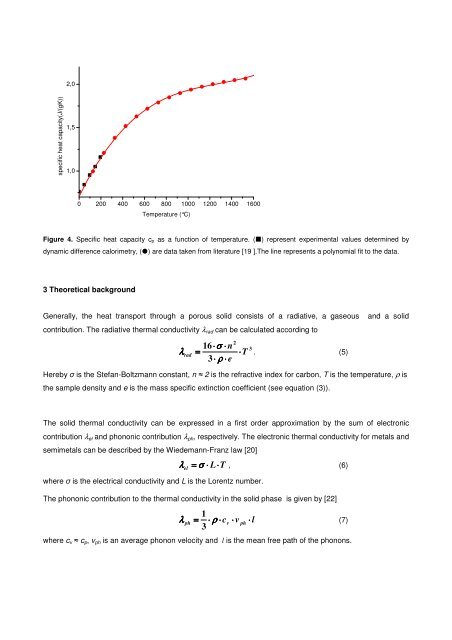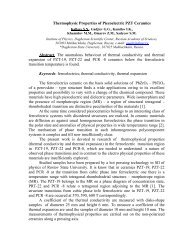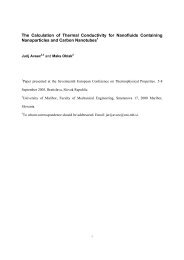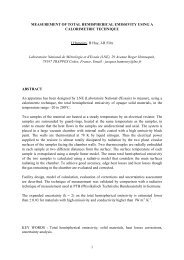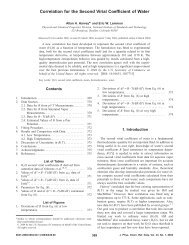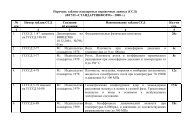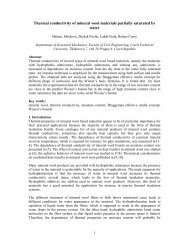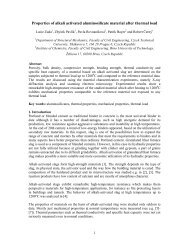Thermal conductivity of amorphous carbon as a ... - thermophysics.ru
Thermal conductivity of amorphous carbon as a ... - thermophysics.ru
Thermal conductivity of amorphous carbon as a ... - thermophysics.ru
You also want an ePaper? Increase the reach of your titles
YUMPU automatically turns print PDFs into web optimized ePapers that Google loves.
2,0<br />
specific heat capacity(J/(gK))<br />
1,5<br />
1,0<br />
0 200 400 600 800 1000 1200 1400 1600<br />
Temperature (°C)<br />
Figure 4. Specific heat capacity c p <strong>as</strong> a function <strong>of</strong> temperature. () represent experimental values determined by<br />
dynamic difference calorimetry, () are data taken from literature [19 ].The line represents a polynomial fit to the data.<br />
3 Theoretical background<br />
Generally, the heat transport through a porous solid consists <strong>of</strong> a radiative, a g<strong>as</strong>eous<br />
contribution. The radiative thermal <strong>conductivity</strong> λ rad can be calculated according to<br />
16⋅σ<br />
⋅ n<br />
3⋅<br />
ρ ⋅ e<br />
2<br />
3<br />
λ<br />
rad<br />
= ⋅T<br />
. (5)<br />
and a solid<br />
Hereby σ is the Stefan-Boltzmann constant, n ≈ 2 is the refractive index for <strong>carbon</strong>, T is the temperature, ρ is<br />
the sample density and e is the m<strong>as</strong>s specific extinction coefficient (see equation (3)).<br />
The solid thermal <strong>conductivity</strong> can be expressed in a first order approximation by the sum <strong>of</strong> electronic<br />
contribution λ el and phononic contribution λ ph , respectively. The electronic thermal <strong>conductivity</strong> for metals and<br />
semimetals can be described by the Wiedemann-Franz law [20]<br />
el<br />
= σ ⋅ L⋅T<br />
λ , (6)<br />
where σ is the electrical <strong>conductivity</strong> and L is the Lorentz number.<br />
The phononic contribution to the thermal <strong>conductivity</strong> in the solid ph<strong>as</strong>e is given by [22]<br />
λ<br />
ph<br />
1<br />
= ⋅ ρ ⋅ c<br />
3<br />
where c v ≈ c p , v ph is an average phonon velocity and l is the mean free path <strong>of</strong> the phonons.<br />
v<br />
⋅ v<br />
ph<br />
⋅ l<br />
(7)


